
M. Maur, Getto płonie
The author presents M. Maur’s account of a bunker fire during the Warsaw Ghetto Uprising (previously unpublished), preserved in the Adolf Berman Archive.
More...We kindly inform you that, as long as the subject affiliation of our 300.000+ articles is in progress, you might get unsufficient or no results on your third level or second level search. In this case, please broaden your search criteria.

The author presents M. Maur’s account of a bunker fire during the Warsaw Ghetto Uprising (previously unpublished), preserved in the Adolf Berman Archive.
More...
After the liquidation of the Chełmno extermination camp, the post-camp areas remained unattended by local authorities for two months. On 1 April 1945, thanks to the personal efforts of Holocaust survivor Jakub Waldman, a commission of representatives of the authorities of the neighboring Turek county arrived at Chełmno. The results are the reports presented below, which testify to the knowledge of villagers and residents about the crimes committed by the SS-Sonderkommando Kulmhof. The materials collected by the commission were handed over to the Central Jewish Historical Commission in Łódź, which, on 26 May 1945, led to an on-site inspection of the former camp area by members of the Main Commission for the Investigation of German Crimes in Poland headed by Zofia Nałkowska, and then to the launch of an official investigation by the examining judge of the District Court in Łódź, Władysław Bednarz.
More...
The article cites unknown accounts from the investigation and the first trial of more than a dozen functionaries from the Stutthof camp tried in Gdansk in the spring of 1946. The fate of the Jews at Stutthof was among the most important threads of the investigation, but the interesting materials collected at the time have not entered academic circulation. A unique feature of the Gdańsk trial was the presence at the trial of former Jewish inmates of KL Stutthof, men and women who recounted their experiences and observations. The article quotes and comments on some unknown early Jewish testimonies about the camp, given immediately after the war. The text is an extended discussion of the sources.
More...
The “Around us a Sea of Fire” exhibition is the most important exhibition about the Warsaw Ghetto Uprising in recent years. Stripped of pathos and pomp, it looks at the fate of ordinary people who decided to survive hell at any cost. It allows us touch their experience and creates conditions for contemporaries to understand what people are capable of. Both the one that kills and the one that tries to survive.
More...
In 2020, a new permanent exhibition opened at the Jewish Museum in Berlin. It tells the story of the Jews in Germany from the Middle Ages to the present. The chronological route is interspersed with thematic “islands” showcasing Jewish culture, tradition and religious practices. One of the main differences from the previous exhibition is that much more attention has been paid here to the period of National Socialism. This part of the exhibition also seems to be the most innovative in both content and form. Preserving its cognitive nature, at the same time it takes the form of an art installation. However, the designers do not use elements of staging, on the contrary, the installation is highly abstract, shying away from any literality.
More...
Review of: Nie-miejsca pamięci 1. Nekrotopografie, red. Roma Sendyka i in., Warszawa: IBL 2020, 514 s.; Nie-miejsca pamięci 2. Nekrotopologie, red. Roma Sendyka i in., Warszawa: Wydawnictwo IBL PAN, 2020, 598 s.; Roma Sendyka, Poza obozem. Nie-miejsca pamięci – próba rozpoznania, Warszawa: Wydawnictwo IBL PAN, 2021, 364 s.
More...
Nechama Tec urodziła się w 1931 r. w rodzinie Bawników, od kilku pokoleń mieszkającej w Lublinie. Ojciec Roman miał dwie nieduże fabryki, matka Estera zajmowała się domem. Nechamę już w dzieciństwie interesowali inni ludzie. Dopytywała dlaczego, co i w jaki sposób robili. Jej ojciec uważał, że dzieci powinny wiedzieć jak najwięcej, również o coraz bardziej opresyjnej, wojennej rzeczywistości. Zdaniem Tec, to właśnie uratowało ją i jej siostrę, kiedy jako katoliczki w kolejnych domach ukrywały się z rodzicami lub od nich oddzielone. Cała czteroosobowa rodzina Bawników przeżyła. W 1950 r. Nechama poślubiła Leona Teca, psychiatrę dziecięcego, a dwa lata później małżonkowie wyemigrowali do USA; tam urodziło się dwoje ich dzieci.
More...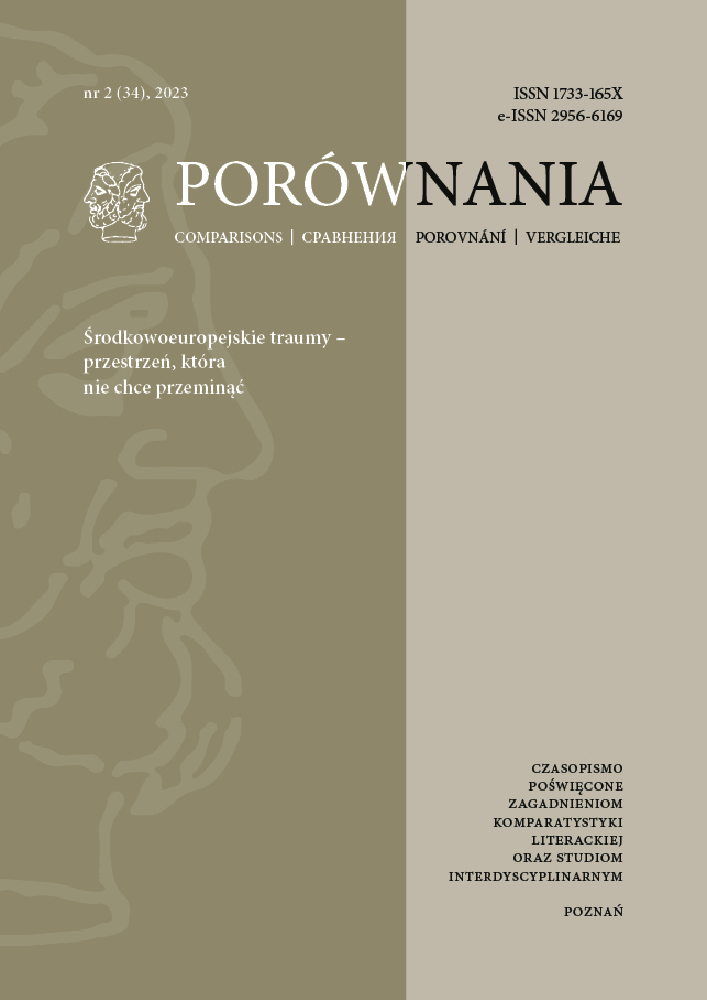
Repression and concealment of one of the worst traumatic experiences of the 20th century affects Europe’s largest minority in a massive way. In contrast to the Shoa, the Porajmos is little known to many people of both the majority and the minority. Often repressed as a taboo, breaking the silence about this trauma is of central relevance for the self-confidence of the Roma, especially those born afterwards. In fact, in the case of victims and their children and grandchildren, there is a tension between repression and concealment on the one hand and the need to overcome trauma on the other. Using the example of two educational works for young minority and majority readers in which the painful memories of Polish Romani Sofia Taikon, born Brzezinska, are fictionalised, the article illustrates how this tension is dealt with and how space is given to the long-tabooed trauma.
More...
Menachem Kaiser’s Plunder: A Memoir of Family Property and Nazi Treasure (2021) critiques the generic limitations of the “3G” (third-generation) memoir by pointing to its frequently sentimental tenor and facile epiphanies, perpetuated by the publishing market. Plunder focuses instead on material traces of the past and on Kaiser’s effort to reclaim property left behind by his relatives in Poland. This approach allows Kaiser to address the aftermath of historical trauma without vicariously identifying with Holocaust victims or survivors.
More...
The article deals with the subject of the Holocaust in Hungarian literature between 1949 and 1953, and in particular with the writing strategies used by the authors to describe a phenomenon that was silenced and removed from public debate. During the post-war period, when the Communists were in power in Hungary, it was forbidden to write about the war and especially about the Holocaust of the Jews; moreover, all literary texts had to be approved by the censors. Despite the strict restrictions, Hungarian writers managed to smuggle the forbidden topic into their novels. In this article, I discuss the prose of József Debreczeni, István Kamjén, and Ferenc Karinthy against the background of social and historical phenomena in Hungary.
More...
Felicja Raszkin-Nowak still remains a little-known witness of the Holocaust. Born in Warsaw, she found herself in Białystok as a little girl during the war. Miraculously she survived the liquidation of the ghetto and hid on a farm, from where she was liberated. After the war, she worked at Polish Radio, and after March 1968 she emigrated to Denmark. In 1991, she published her memoirs titled My Star, translated into several languages. They are a faithful and shocking portrayal of war and the Holocaust, written with rare mastery. Raszkin-Nowak’s writing strategy combines several different perspectives: that of a child and an adult, a Polish woman and a Jew, a girl and a mature woman on the threshold of old age. Raszkin-Nowak uses an innovative storytelling technique that can be called empathetic realism. It enables the author to overcome the internal and external distance between the experience of childhood and the experience of war, the experience of cultural settlement and the experience of emigration, the time of events and the time of reminiscing.
More...
After their electoral victory in 2015, the Law and Justice party started a counter-revolution in historical policy, intended to undermine critical historiography on the Holocaust. As a result, “dead rescuers,” Poles who lost their lives saving Jews during the Second World War, are commemorated by a host of institutions: a government-sponsored research institute, museums, and the Catholic Church. This commemoration borrows its aesthetics from earlier practices established in Holocaust memory: post-traumatic architecture, lists of victims, and micro-history to boost national pride and defend the good name of Poland abroad. Memory actors receive financial support from the government, becoming a mouthpiece for its reclaiming of the past for ethnonationalist ends.
More...
This article analyzes the diaries written by teenagers living in the Litzmannstadt Ghetto during World War II and contrasts them with the accounts of adult ghetto inhabitants. The diaries in focus belong to Rywka Lipszyc and Dawid Sierakowiak, both adolescents who endured similar hardships yet displayed distinct perspectives and writing styles. Sierakowiak, characterized by his erudition and intellectual curiosity, provides a detailed and analytical account, focusing first on external events and then on his physical deterioration. In contrast, Lipszyc’s diary reflects her emotional turmoil. On the pages of her journal, she grapples with the loss of her family and the trauma of daily existence. The comparative analysis of Lipszyc’s and Sierakowiak’s diaries underscores the complexities of ghetto life and the varied coping mechanisms employed by its inhabitants. Their narratives, while unique, collectively contribute to a deeper understanding of the impact of the Holocaust on adolescent experiences and perceptions.
More...
The article focuses on Roberto Benigni's film, Life is Beautiful and analyses the film's unique combination of comedy and drama which evokes intense emotions and prompts reflection on human existence in the face of incomprehensible suffering. This culturally and historically significant film has gained prominence in world cinema, becoming an important work of cinematic art. The article demonstrates how the director's approach to depicting the Holocaust through humour and love provokes debate about the role of cinematic art in portraying difficult themes. Despite the controversy, Life is Beautiful is an undeniable testament to human endurance and strength of spirit, reminding us that sparks of hope and beauty can be found even in the darkest moments. The humour in the film acts as a soothing element that offsets the weight of the difficult topic, while emphasising that laughter can be a form of resistance to suffering.
More...
Fabula je klišeizirana: glavni junak useljava u staru kuću. Isprva je sve u redu, ali ubrzo saznajemo da je u toj kući počinjeno jezivo ubojstvo. Zločin je davno dogodio, ubojice sada nikome ne prijete. A ipak, glavni junak je na mukama - kuću opsjedaju duhovi. Prošlost je zatrovala to mjesto.
More...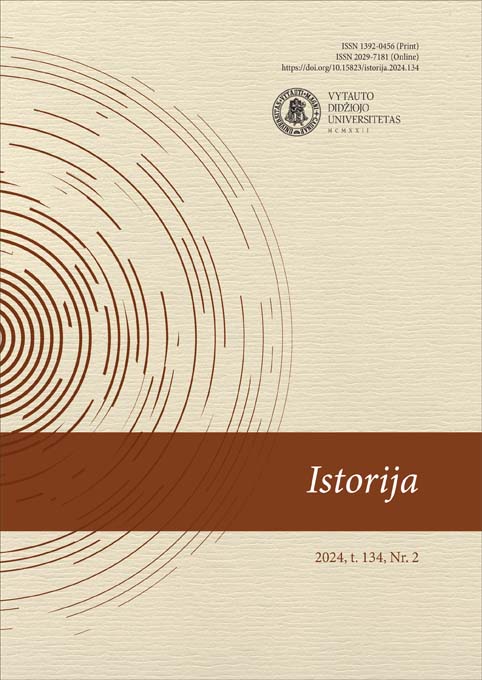
Jewish journalist, lawyer and businessman Rudolfas Valsonokas is known in Lithuanian historiography as the author of the book “Klaipėda problem”, in which he analysed the political and socio-economical processes in the Klaipėda (Memel) region. However, other significant features of Rudolf Valsonok’s biography remain unknown. Based on documents from Lithuanian and German archives, historiographical and other materials, the article analyses the details of Rudolf Valsonok’s biography, his activities in the Klaipėda region, contacts with the Polish diplomats, his life (survival) in the Kaunas ghetto and the Dachau Concentration Camp, and his ideological drift from folkism to Zionism after his liberation from the Dachau concentration camp.
More...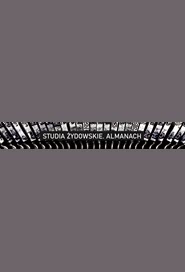
Zagłada europejskich Żydów określana jest mianem wydarzenia das Ereignis Auschwitz lub „nadchodzenia”. Nauka i badania w pewnym momencie stanęły przed problemem nieodpowiednich narzędzi do badania i prezentacji Holokaustu. Nie tylko historiografia napotkała problem opisania „nieopisanego” i wyjaśnienia „niewytłumaczalnego”. Poza tym byli to także świadkowie wydarzeń, którzy przeżyli Zagładę i po traumie milczeli przez lata. Być może dlatego dyskurs o Shoa został zainicjowany długo po zakończeniu II wojny światowej. Ponadto w Polsce, gdzie znajdowały się niemieckie obozy zagłady, badania nad Holokaustem i otwartą debatę można było prowadzić dopiero po obaleniu komunizmu. Historiografia, rozumiana jako metoda ustalania, interpretowania i przedstawiania faktów, dąży do uchwycenia Zagłady. Obecny dorobek to przede wszystkim praca historiografów zachodnich. Polska historiografia Holokaustu na ziemiach polskich opiera się głównie na amerykańskich i zachodnioeuropejskich ośrodkach naukowych i uniwersytetach. Artykuł obraca się wokół czterech zagadnień. Rozpoczyna się wprowadzeniem podstawowych założeń historiografii. Następnie przedstawiono różne podejścia do Holokaustu w dyskursie historiograficznym, aby odzwierciedlić, w jaki sposób historiografia zachodnia odnosi się do problematyki przedstawiania Holokaustu. Dwa ostatnie punkty, o których mowa, nakreślają stosunek Franka Ankersmita i Haydena White’a do historiografii Holokaustu.
More...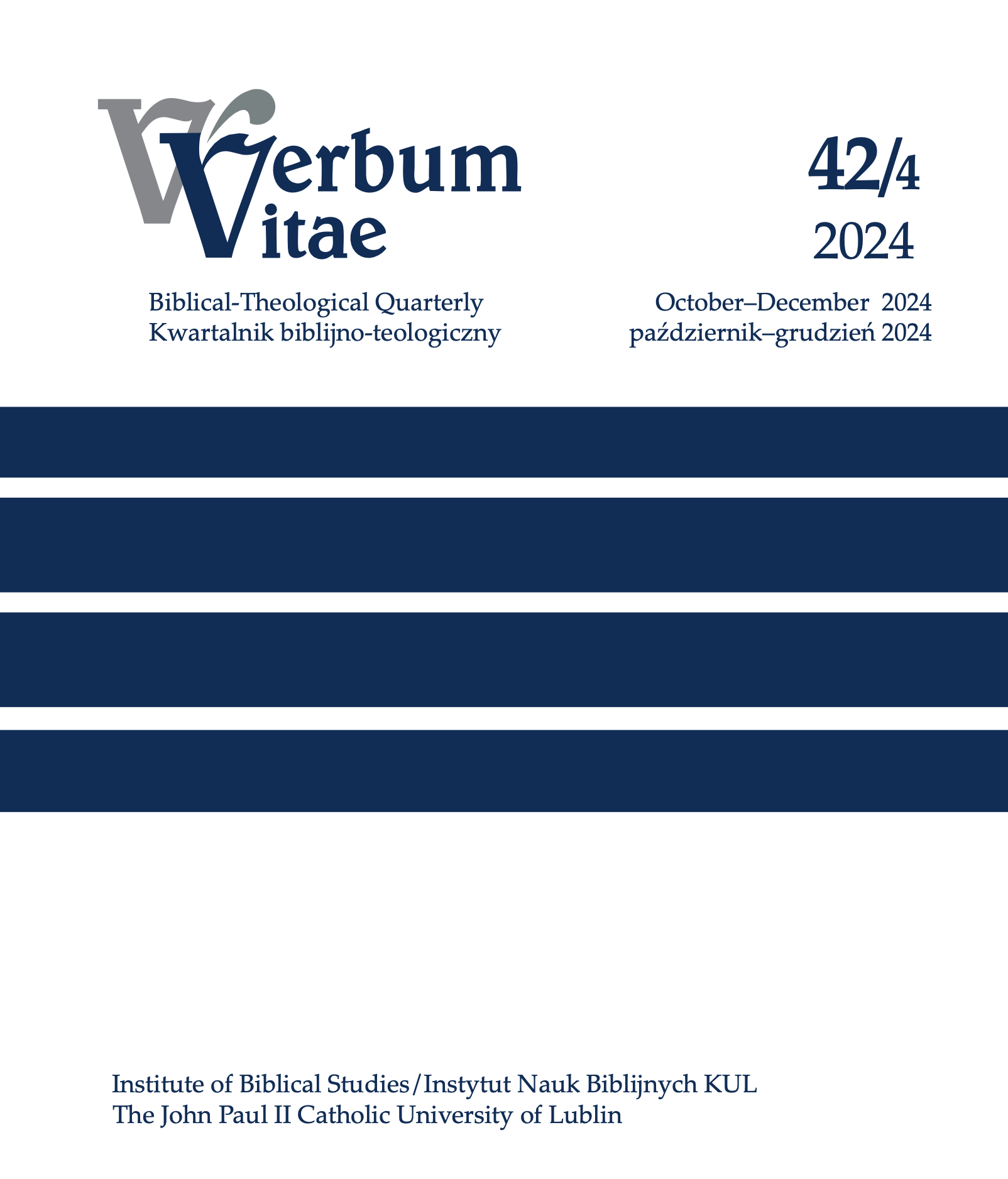
The article aims to present the theological foundations of the life and activities of MotherMatylda Getter, a Franciscan sister of the Family of Mary, superior of the Warsaw province, engagedthroughout her life in the care, upbringing, and education of abandoned children and orphans, and thencooperating particularly sacrificially during the German occupation in saving endangered Jewish chil-dren. The authors of the article posed the question of the reasons for the unusual attitude of MotherGetter, who, as a distinguished long-term superior of a religious province, was not required to take suchrisky actions during the war. The following analysis shows that this was possible because of a deepcommitment to a personal relationship with the Master of Nazareth and openness to the inspiration ofthe Holy Spirit, as well as the long-standing cooperation of many people adhering to a shared spiritualityand monastic rule.
More...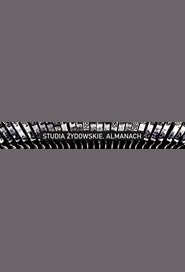
Artykuł dotyczy badań archeologicznych prowadzonych jesienią 2021 roku w Ogrodzie Krasińskich w Warszawie. Program nieinwazyjnej eksploracji na terenie byłego getta jest wynikiem wspólnego projektu Muzeum Getta Warszawskiego i Christopher Newport University w Wirginii, USA. Kierownikiem zespołu badawczego był prof. Richard Freund, koordynatorem ze strony polskiej był dr Jacek Konik. Wykopaliska w Ogrodzie Krasińskich trwały tylko 6 dni i były prowadzone na ograniczonym obszarze, niemniej program będzie kontynuowany, a wyniki badań już dowodzą, że eksploracja archeologiczna na terenie Getta Warszawskiego jest metodą badawczą, która umożliwia stosunkowo szybko zebrać informacje zarówno o samej „dzielnicy żydowskiej”, jak i o jej mieszkańcach. Metoda badawcza jest tym bardziej obiecująca, że znana obecnie dokumentacja fotograficzna wielu obszarów getta jest niekompletna.
More...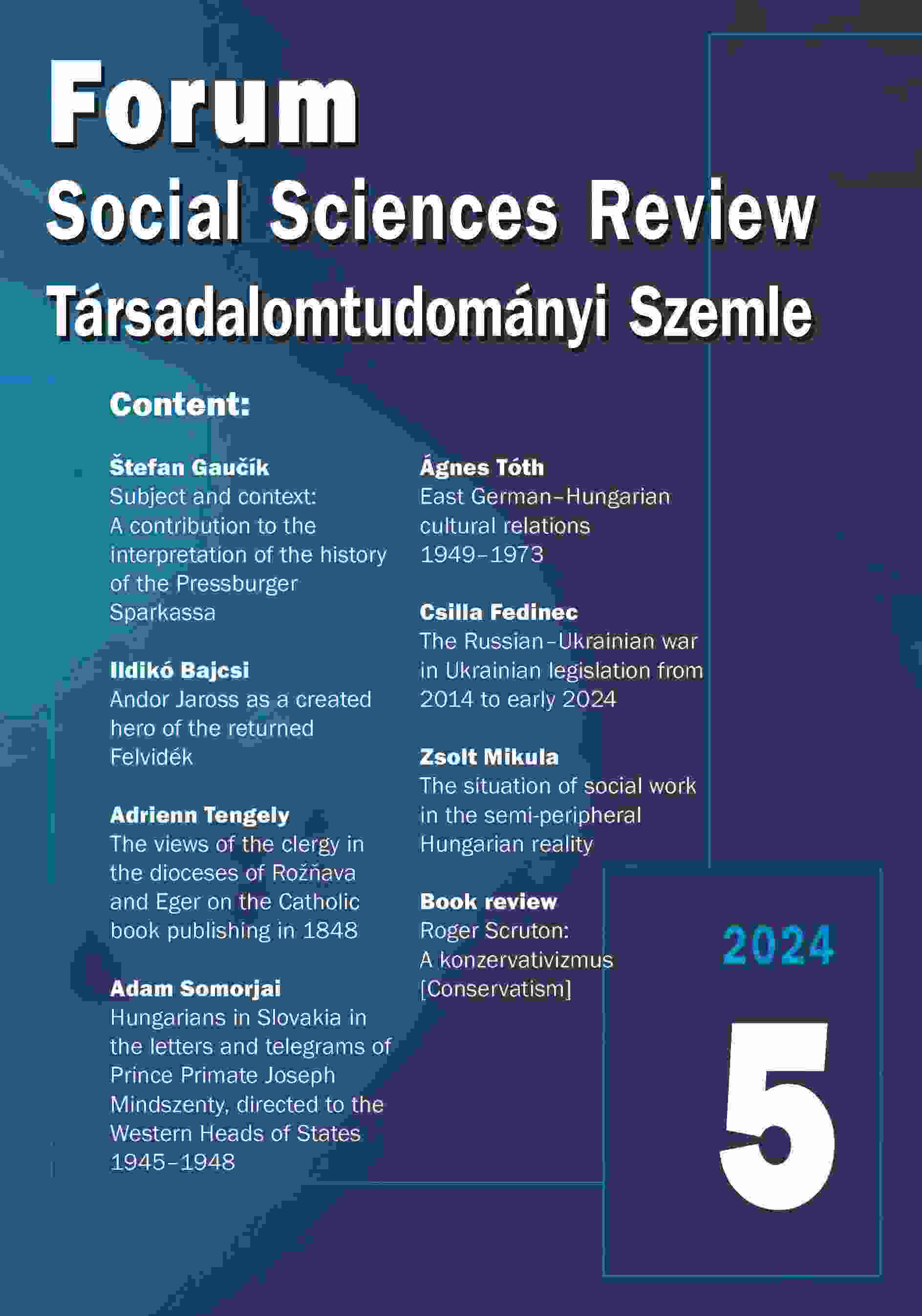
Andor Jaross (1896–1946) is principally known as a Minister of Interior in Hungary after the Nazi’s occupation. He is also one of the most emblematic personages responsible for the deportation of the Hungarian Jews in 1944. After the First Vienna Award, when the southern parts of (Czecho)Slovakia were reannexed to Hungary, Jaross protected the dictatorial aspirations of Hungarian Prime Minister Béla Imrédy. In return, he was nominated for the Minister of the Felvidék. According to the press articles, right after the reannexation in 1938 (what was at that time commonly referred to as “the return to the Motherland Hungary”), Jaross became a “hero” in the returned regions, where he made all the decisions in practice, such as verification procedures, land distributions, and Jewish exemptions. Based on press materials of the examined period, this study poses the main question: What characteristics define the hero image of Jaross after 1938? It also highlights the negative consequences of the acceptation of this heroic role that was related to the “liberation” of Felvidék, his right-wing radicalization, and his views on the Jewish issue and the land distributions.
More...